How can I perform a subtraction between the results of 2 queries with
a group by?
You are close with what you have. There are a few changes that would make this work easier, however:
- Alias the results of your two
subqueries. This will make them easier to use.
- Return more columns from your subqueries so that you may join on "something" which would allow for subtraction to only occur on matching rows.
- Add an alias to your
Count(*) statements. Again, this will make them easier to use.
If this image demonstrates what you are looking for:

Then I believe this query will help you out:
SELECT op.ApartmentType,
op.ApartmentLocation,
op.TotalOwned,
ISNULL(tp.TotalOccupied, 0) AS [TotalOccupied],
op.TotalOwned - ISNULL(tp.TotalOccupied,0) AS [TotalVacant]
FROM
(
SELECT *,
COUNT(*) as TotalOwned
FROM SO_SubtractionQuestion.OwnedProperties
GROUP BY ApartmentType, ApartmentLocation
) AS op
LEFT JOIN
(
SELECT *,
COUNT(*) as TotalOccupied
FROM [SO_SubtractionQuestion].[OccupiedProperties]
GROUP BY ApartmentType, ApartmentLocation
) AS tp
ON op.ApartmentType = tp.ApartmentType
AND op.ApartmentLocation = tp.ApartmentLocation
I set this query up similar to your own: it has a select statement with two subqueries and the subqueries have a Count(*) on a grouped query. I also added what I suggested above to it:
- My first subquery is aliased with
op (owned properties) and my second is aliased with tp(taken properties).
- I am returning more columns so that I may properly join them in my outer query.
- My
Count(*) statements in my subqueries have aliases.
In my outer query, I am then able to join on ApartmentType and ApartmentLocation (look below for the example table/data setup). This creates a result set that is joined on ApartmentType and ApartmentLocation that also contains how many Owned Properties there are (the Count(*) from the first subquery) and how many Occupied Properties there are (the Count(*) from the second subquery). At this point, because I have everything aliased, I am able to do simple subtraction to see how many properties are vacant with op.TotalOwned - ISNULL(tp.TotalOccupied,0) AS [TotalVacant].
I am also using ISNULL to correct for null values. If I did not have this, the result of the subtraction would also be null for rows that did not have a match from the second subquery.
Test Table/Data Setup
To set up the example for yourself, here are the queries to run:
Step 1
For organizational purposes
CREATE SCHEMA SO_SubtractionQuestion;
Step 2
CREATE TABLE SO_SubtractionQuestion.OwnedProperties
(
ApartmentType varchar(20),
ApartmentLocation varchar(20)
);
CREATE TABLE SO_SubtractionQuestion.OccupiedProperties
(
ApartmentType varchar(20),
ApartmentLocation varchar(20)
);
INSERT INTO [SO_SubtractionQuestion].[OwnedProperties] VALUES ('Studio', 'New York'), ('Studio', 'New York'), ('Studio', 'New York'), ('House', 'New York'), ('House', 'Madison');
INSERT INTO [SO_SubtractionQuestion].[OccupiedProperties] VALUES ('Studio', 'New York'), ('Studio', 'New York');
